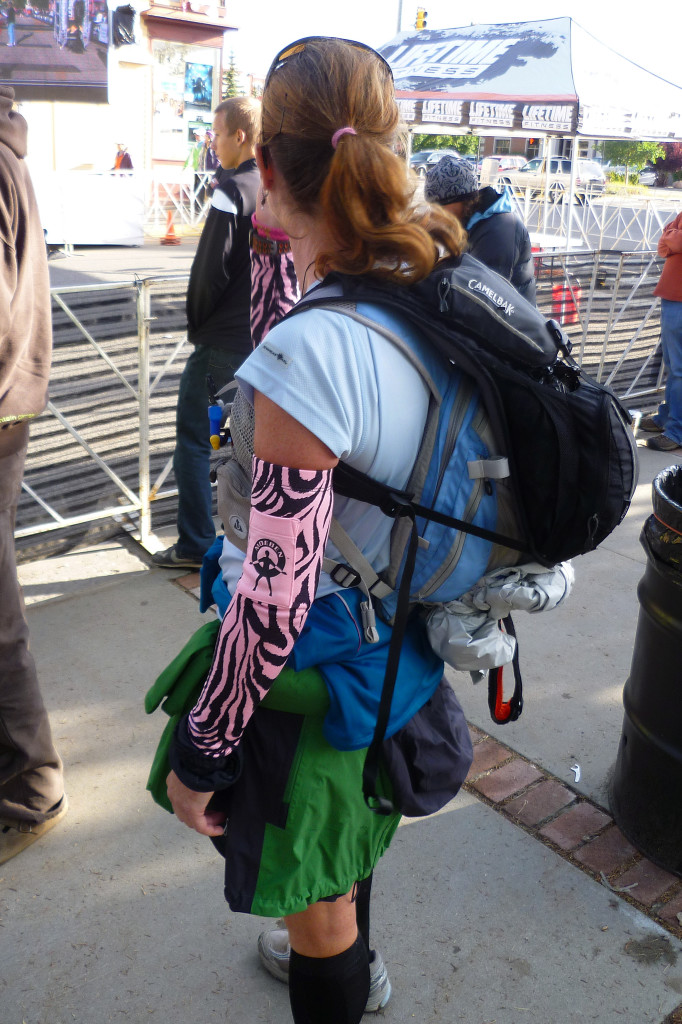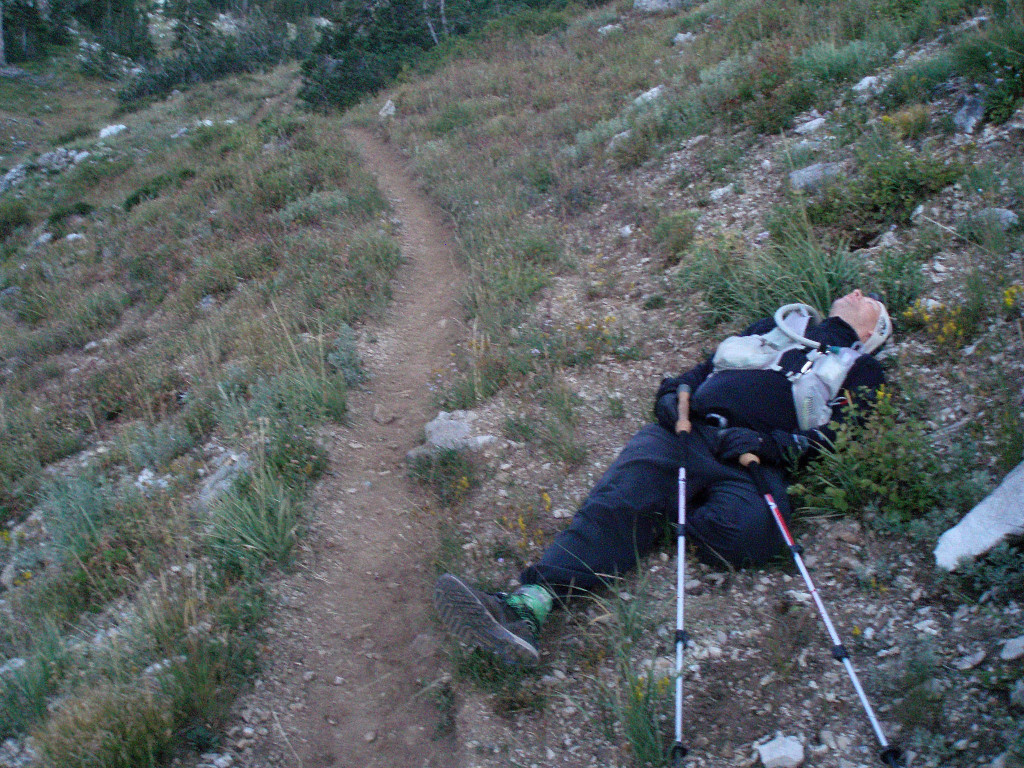It’s 100miler season in the Rocky Mountain West and with many races on tap for the next month I figured I’d right up a few thoughts on what makes a good pacer (in my eyes). In my eight years of ultrarunning I’ve finished seven different 100mile races and paced another successful 15-20, so these are just some thoughts I’ve gleened from pacing people of all different abilities from top ten to pushing the cutoffs.
For those unfamiliar with the ultramarathon scene, in most 100mile races the runner is allowed to have someone accompany them, a Pacer, for the latter 50-60% of the course. This ‘Pacer’ can be a friend, family member, random person picked up at the race or in one’s home town, but no matter who they are there main goal is to help get the runner to the finish line as quick as possible and in one piece.
- As a Pacer you are more than just someone who follows and/or runs alongside the runner; you are a baby sitter, a navigator, an entertainer, a motivator and most of all a friend. Remember, you’re there to HELP your runner.
- Take care of yourself. While you are there to help your runner get across that finish line, you’re of no use if you don’t take care of yourself along the way, remember to eat, drink, and bring plenty of warm/dry clothes. If you’re suffering it’s going to drag your runner down.
- Be attentive to your runner, because they may not always be attentive to themselves. Before you start out it’s helpful to learn about their plan/strategy. How often do they eat/drink, what is their intended pace, do they like to run in front or have you lead the way, are they stronger uphill or downhill, how do they deal with the dark and sleep deprivation? All of these questions are something to be aware of, because as the miles pile up, your runner will often become less cognizant of their own well being and one of your duties is to act as the baby sitter and make sure they stay on task.
- Know their limits, and keep them on pace. We all have grand ideas of how well our first 100miler will go, sometimes that’s shooting for a big/silver belt buckle, others its simply to finish in one piece. Know what your runner’s goal is, and only push them as appropriate toward this, run their pace NOT YOURS. It’s a long race, and sometimes they need reminding that one doesn’t need to run 8min/miles if their goal is to simply finish. On the converse, as a Pacer you should know all the cutoffs, and make sure your runner always stays ahead of these.
- Eat Eat Eat. A 100miler is a long race, and while a select few can do it on gels and liquids alone, >95% of us need to eat some good hearty calories along the way. Some things I’ve found to work well are; soups, potatoes, cashews/almonds, pasta, turkey & avocado wraps and of course bacon! Now, you don’t want to have them sit down for a four course meal, but 400-600 calories of this every few hours in addition to regular fueling should do the trick. If they are feeling nauseous and don’t want to eat, insist they must. Throwing up is about the same as not eating, so keep trying until you find something that works, that’s your job as a pacer, do what’s best for the runner, even if they hate you for it. NOTE: We are all different, and food choices are a very individual thing, ask your runner first.
- Don’t skimp, carry some extra ‘just in case’ items. As a pacer your job isn’t to carry as little gear as you can possibly get away with, it’s to make sure you’re prepared for whatever time/pace/illness crops up during the race. Remember, you’ll most likely be moving slower than you’re used to, as you’re runner has put in at least 50miles more than you. A few items I like to carry are; tums, gasX, aspirin, fennel seeds (calm upset stomachs), ginger chews (good for stomachs), disposable hand warmers, caffeine pills and an extra flashlight/batteries.
- Light the Way. By the time night falls during a 100mile race most runners are getting tired and a little delirious. As a pacer you can be most helpful by bringing a bright flashlight/headlamp and lighting the way. Make sure to spot course markings and to stay on route, this saves the runner a ton of mental energy as they can simply focus on moving and ‘following the leader’. Make sure you have new batteries and/or extras. NOTE: Make sure your light has AT LEAST 100lumens of power; I like the Petzl Myo RXP/Tikka RXP plus a Fenix E21 for my pacing duties.
- Know the Course. I’m not saying that you need to know every turn, but you should at least know the distances between aid stations and the general race profile. I like to print out a small table (often from the race website) that has these stats on it. Both while crewing and pacing it’s very helpful to reminder your runner when they have especially long or arduous sections coming up. Once again you’re the babysitter 🙂
- Don’t Let Them Drop Because “It’s Hard”. There are plenty of valid reasons to drop from a 100mile race; risk of serious injury, dangerous conditions on course or to personal well being, pulled due to missing cutoffs, but if I’m pacing you the “I’m tired” excuse or “My legs hurt” isn’t gonna fly, these are both part of the game. Being tired and/or sleepy is part of running 100miles, so keep on pushing, if you are truly too tired to stay on your feet, then take a short nap. Secondly, muscles are gonna hurt and sometimes you’ll have a few sore joints, time to toughen up and keep on moving. Lastly, sometimes your runner’s stomach will turn south, in that case there are several things a pacer can do; get them to try ginger, tums, fennel seeds or a host of other natural aids, all of which can help settle an upset stomach. And if it’s really bad, stop your runner IN an aid station, sit them down to rest and try to eat and settle the stomach. Sometimes a break is necessary, but as a pacer, never let them quit at the first sign of adversity. It doesn’t always get worse….in fact it will often get better.
- Lastly, Have Fun. Remind yourself and your runner that we do this for fun! They signed up and paid good money for this sufferfest, so they might as well enjoy it. Some runners like to move in silence, others enjoy the jokes and comraddry of a pacer, so know their style and be a distraction from the surrounding difficulties, it’ll help them mentally.
Best of luck to all those racing in the upcoming weeks at; Wasatch, Tor de Geants, Run Rabbit Run, Pine to Palm, IMTUF, The Bear, and all the other races I’ve forgotten.
Disclaimer: This list solely represents my views and opinions on pacing 100mile running races, you may not agree with any or all of what I’ve said above, and that’s ok.







Pingback: Crewing an Ultramarathon at The Bear 100 | Rays of Funshine